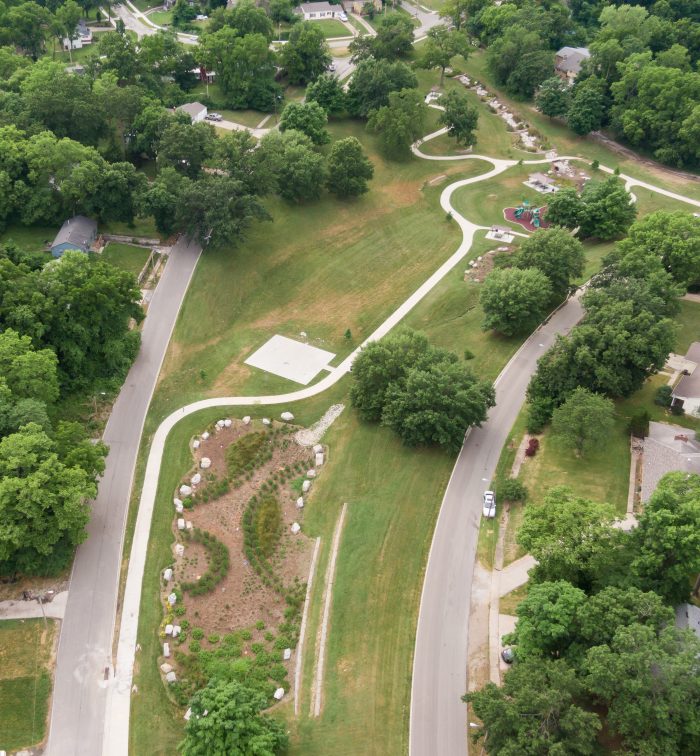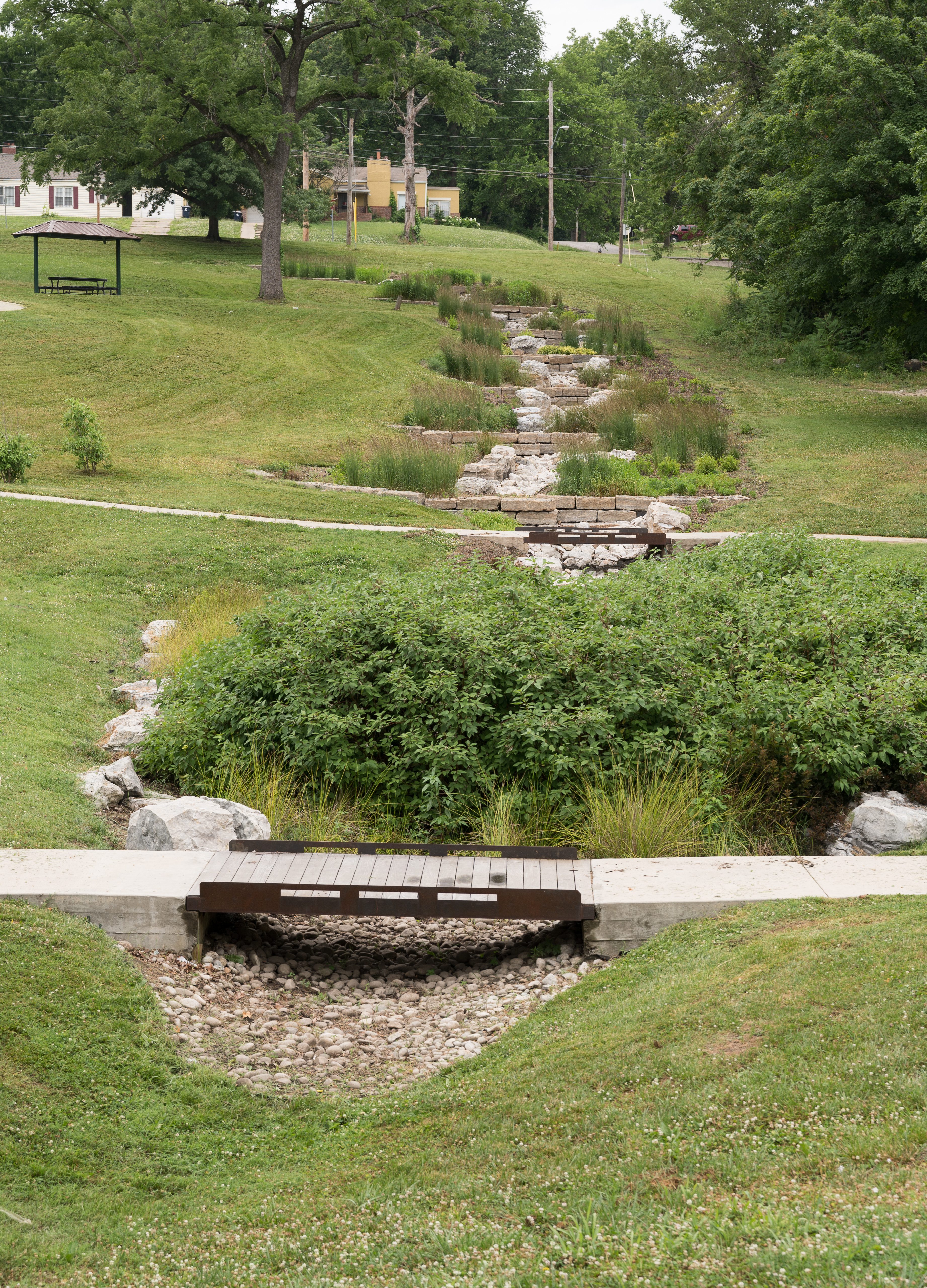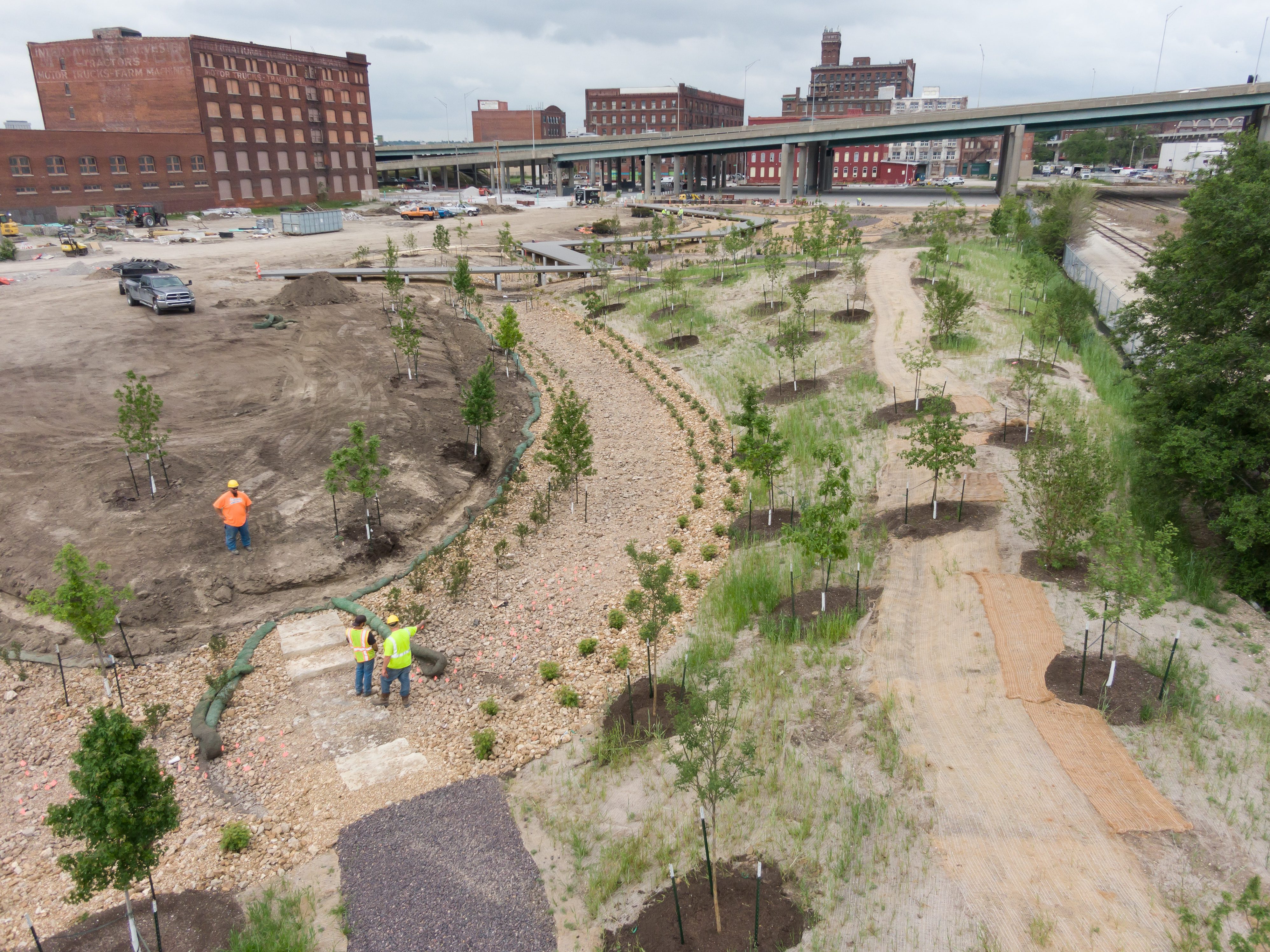Green Infrastructure in Kansas City

Going from Gray to Green to Keep it Clean in the Historic West Bottoms.
When most people think about heavy construction projects, acres of lush, green landscaping are not exactly what come to mind. But when it comes to developing creative solutions to stormwater and sewer overflow issues, those plants and trees you see on the surface are more than meets the eye. Welcome to green infrastructure in Kansas City.
Green alternatives to infrastructure projects not only produce an appealing aesthetic, but they can also save time and money over traditional “gray” infrastructure construction methods, all while improving the environment.
For nearly a decade, Kissick Construction has been helping the City of Kansas City, Missouri, meet the requirements of the Environmental Protection Agency’s Consent Decree to reduce overflows from the City’s combined sewer system by implementing green infrastructure systems. As one of the first contractors selected to construct green infrastructure in the city, Kissick was on the forefront of implementing green methods of construction while working in conjunction with necessary gray infrastructure.

“Being involved from the beginning, Kissick took the time to understand how green infrastructure works and how it can supplement traditional gray infrastructure,” says Coby Crowl, director of business development for Kissick. “We took a systematic approach to investigating how the ecosystem works, how water flows, and understanding its natural intent so we could learn about installing green systems properly to help clean up the water naturally.”
Instead of pushing water away from a site through a system of underground pipes, green infrastructure is engineered to use landscaping to force the water to stay on site where it can nurture beneficial plant life and percolate into the ground naturally. Green infrastructure reduces combined sewer overflows by adding to the capacity of existing systems during extreme rainfall events.
Although green infrastructure is a fairly new way of constructing solutions to flooding and sewer overflow issues, the projects are business as usual for Kissick, says Spencer Moore, Kissick’s manager of KCMO’s Central Industrial District (CID) Green Infrastructure Project in the City’s West Bottoms.
Moore says Kissick’s expertise in gray infrastructure solutions has translated into successful green projects as well. “Understanding the design intent of the project took digesting and comprehending the overall process, but nothing in this project is anything we haven’t done before on another project,” he says.
Kissick is implementing a combination of green and gray solutions to address issues in the West Bottoms, beginning with construction of a new sanitary sewer pipe that allows separation from stormwater runoff. An overland, or above-ground, system will help control the amount of stormwater that enters the underground pipes by mimicking the natural groundwater system. A gravel infiltration basin and cistern was installed below the I-70 “Lewis & Clark Viaduct, one of two Kissick project sites in the West Bottoms.

The more visible location is the Green Plaza being constructed beneath I-670 at Hickory Street, and the elevated boardwalk and landscaped Bioswale extending over 5+ acres to the south. Rainwater flowing into the area from the south and west is directed into a large river-like bioswale planted with native plants, shrubs and trees, and crossed with energy dissipating terraces. The water is given space to collect and provides ecological benefits before more slowly draining away. The bioswale and boardwalk connect to the multi-use Green Plaza which will be used for retail district parking and special events as needed. Kissick constructed a pervious brick paver system over a deep bed of course gravel that will store excess rainwater before it slowly filters into the soil below it or escapes via installed underdrain pipes.
The project will be completed this fall, and heavy rainfalls this summer have already proven the systems are working. Staying on top of maintenance and watching for significant rainfall events is part of the process of maintaining the green infrastructure systems.
Green infrastructure projects need consistent maintenance to ensure the projects continue to serve their purposes. Kissick will continue to maintain this site for three years, and has developed a manual that will provide step-by-step instructions for keeping the plant life and landscaping intact long after the project is handed over to the client.


